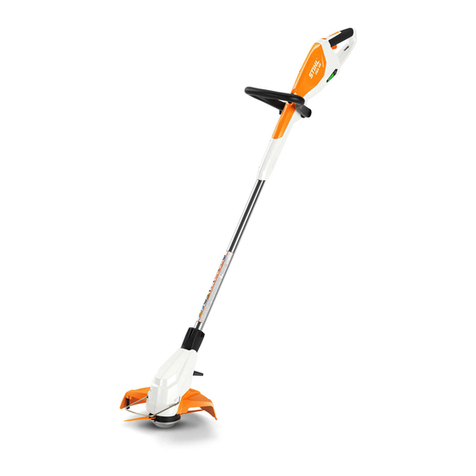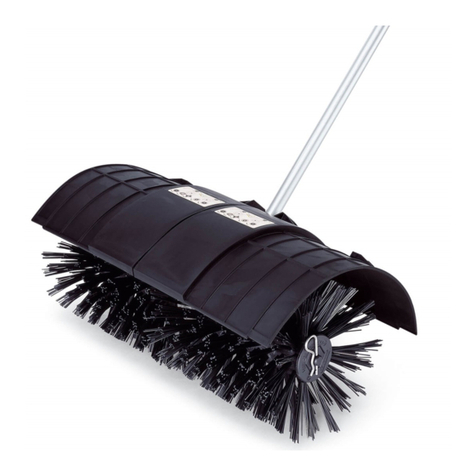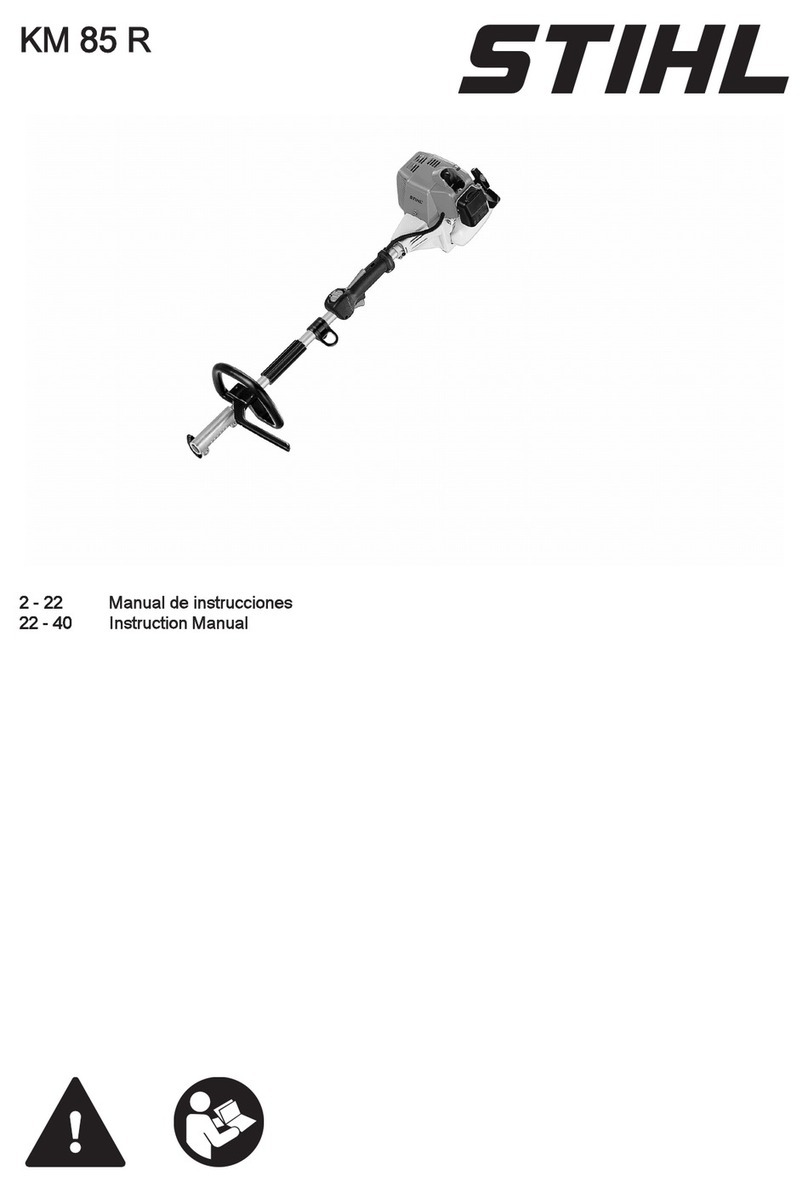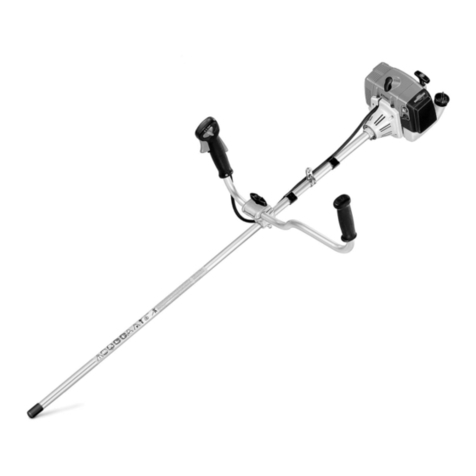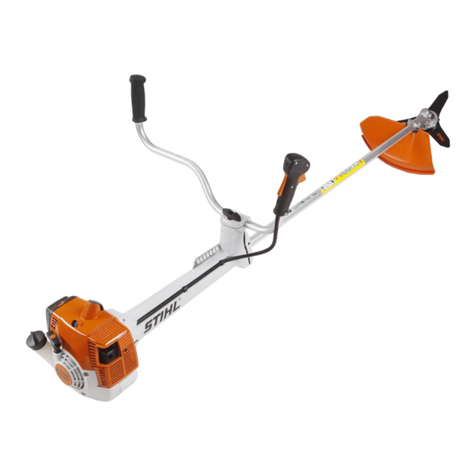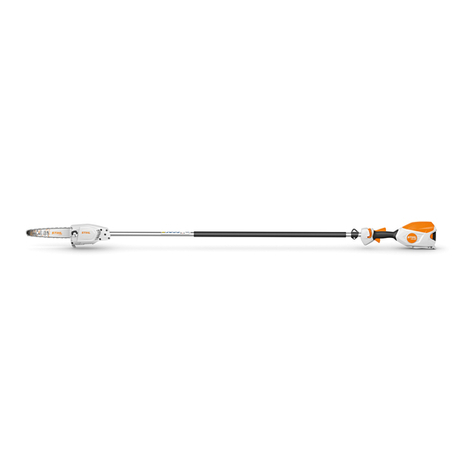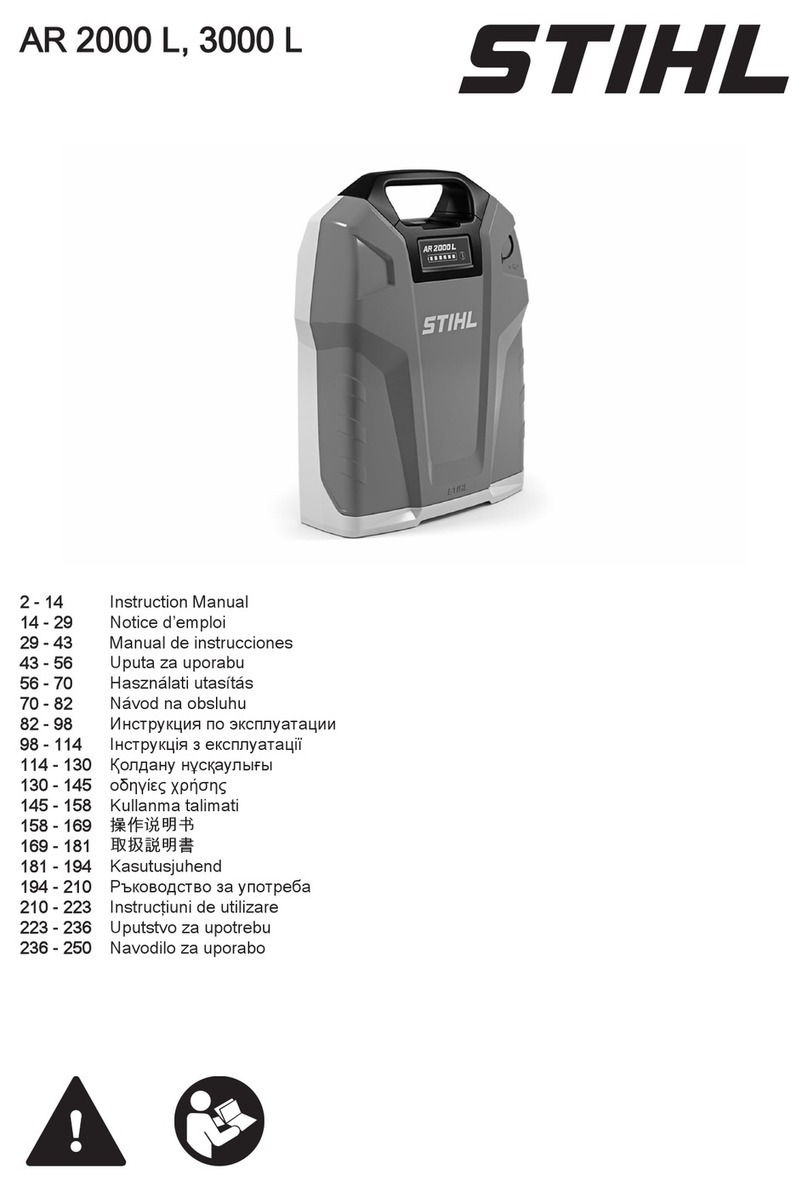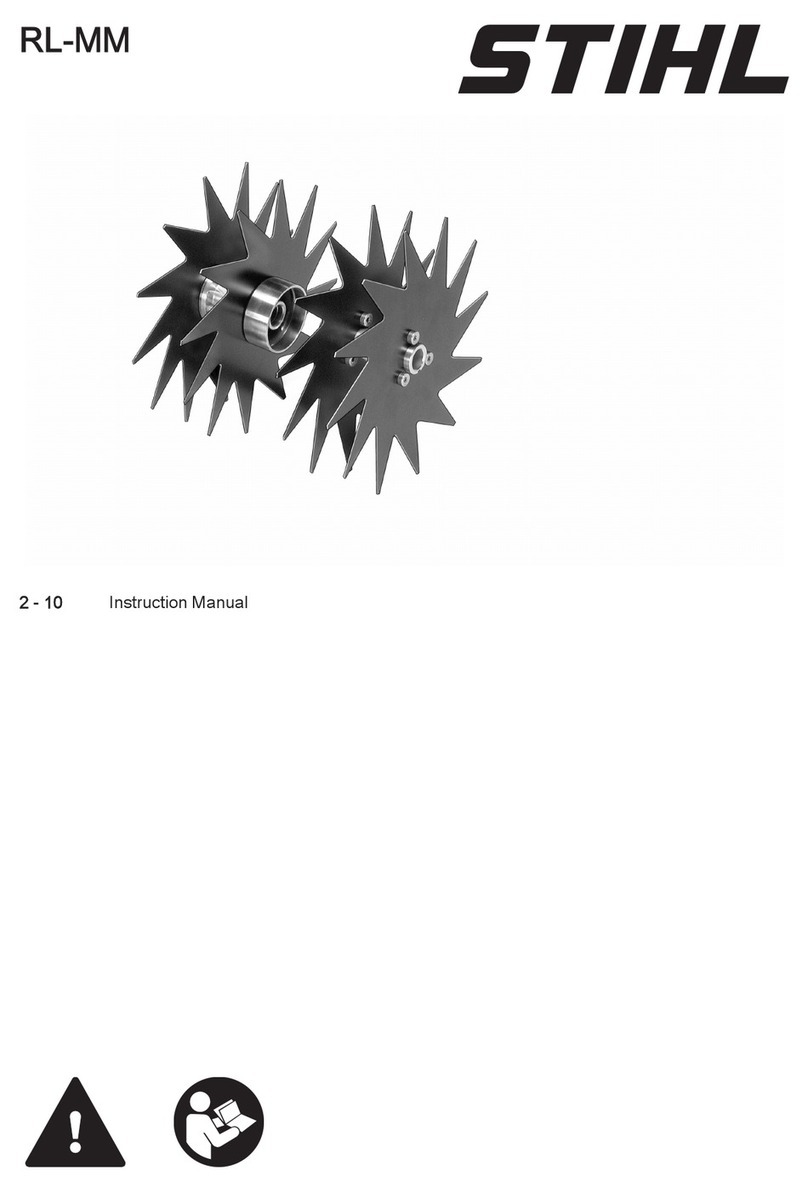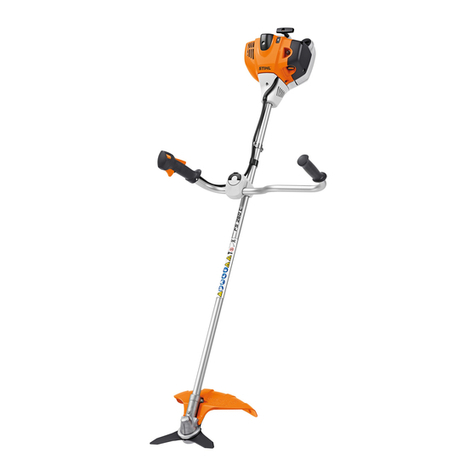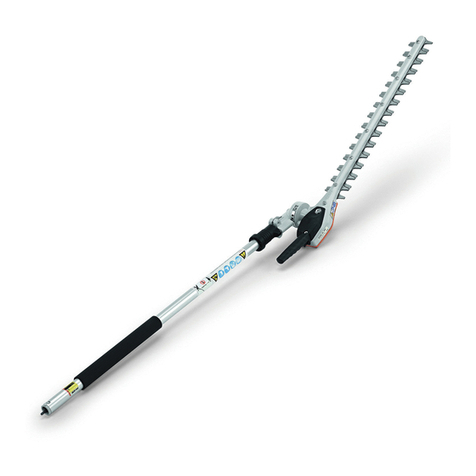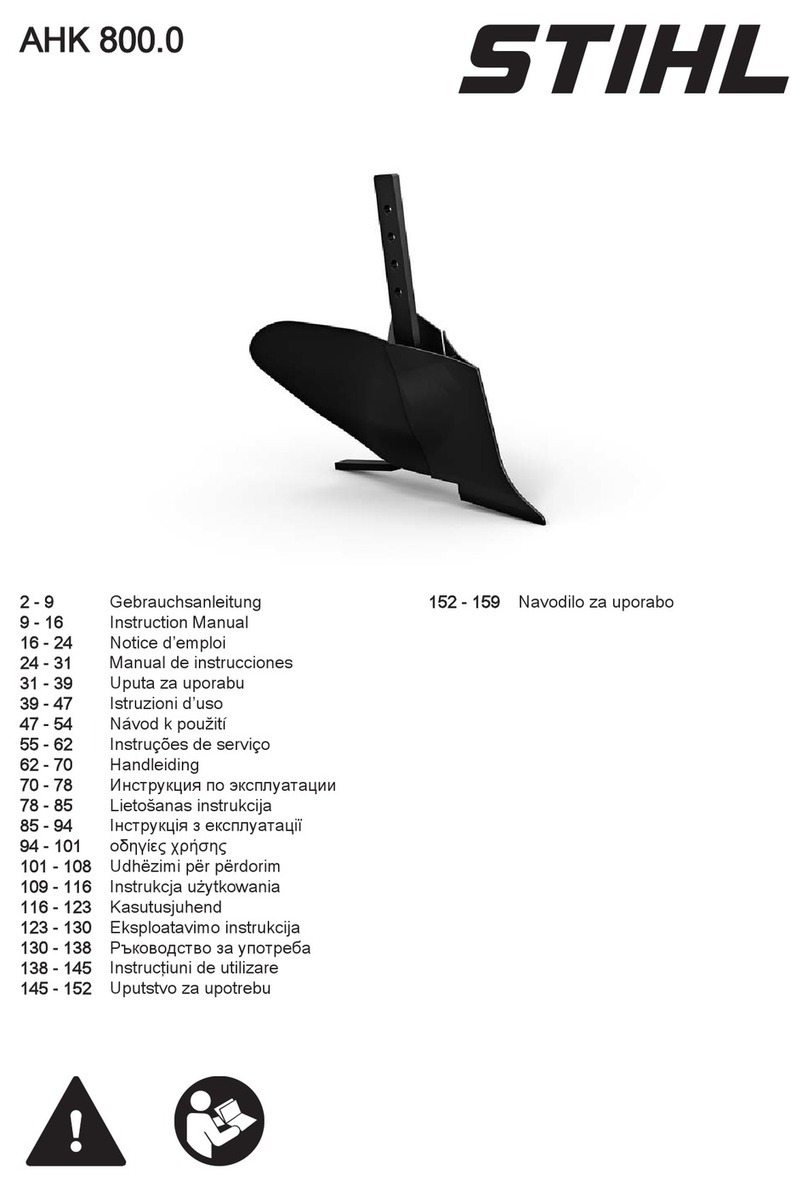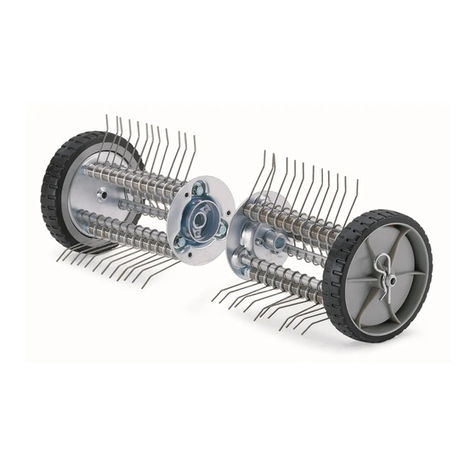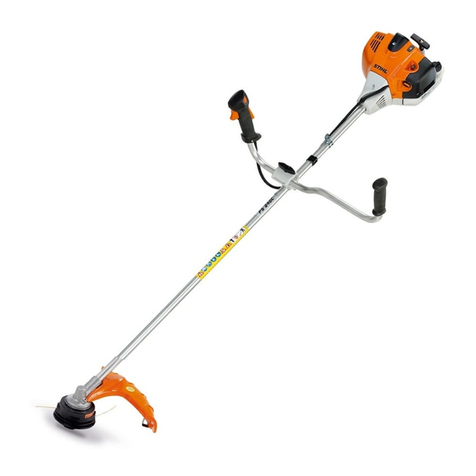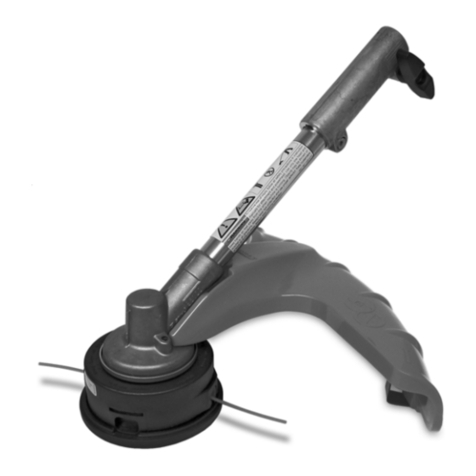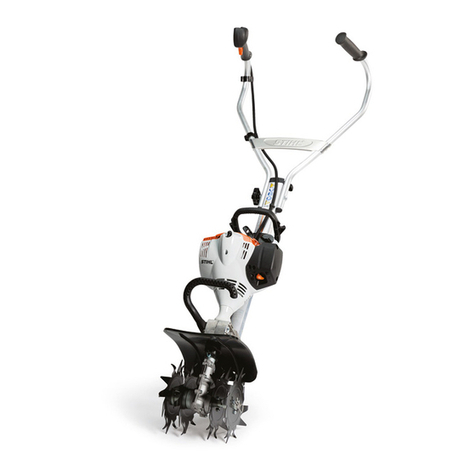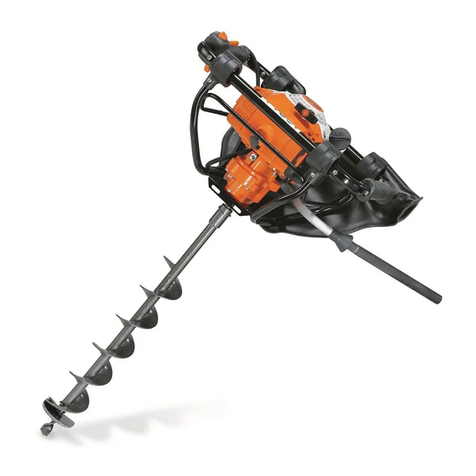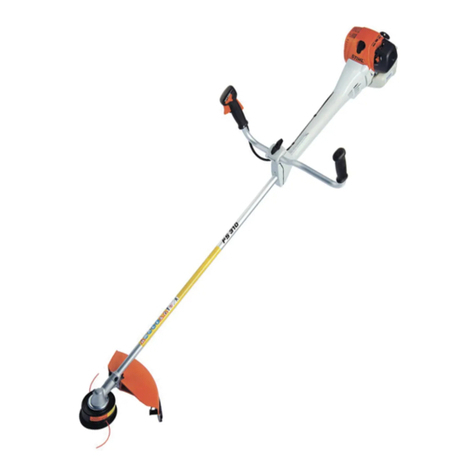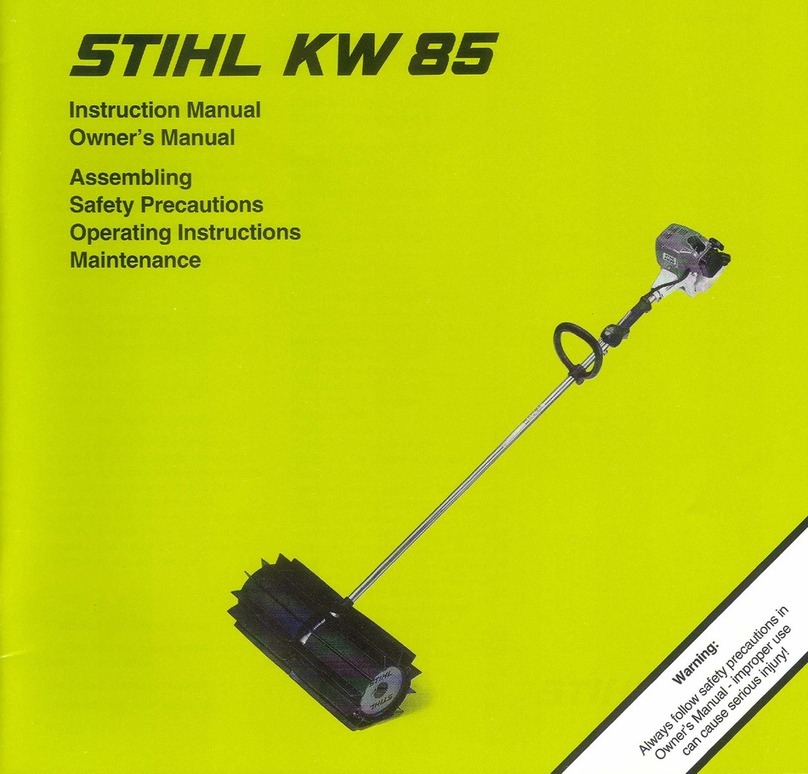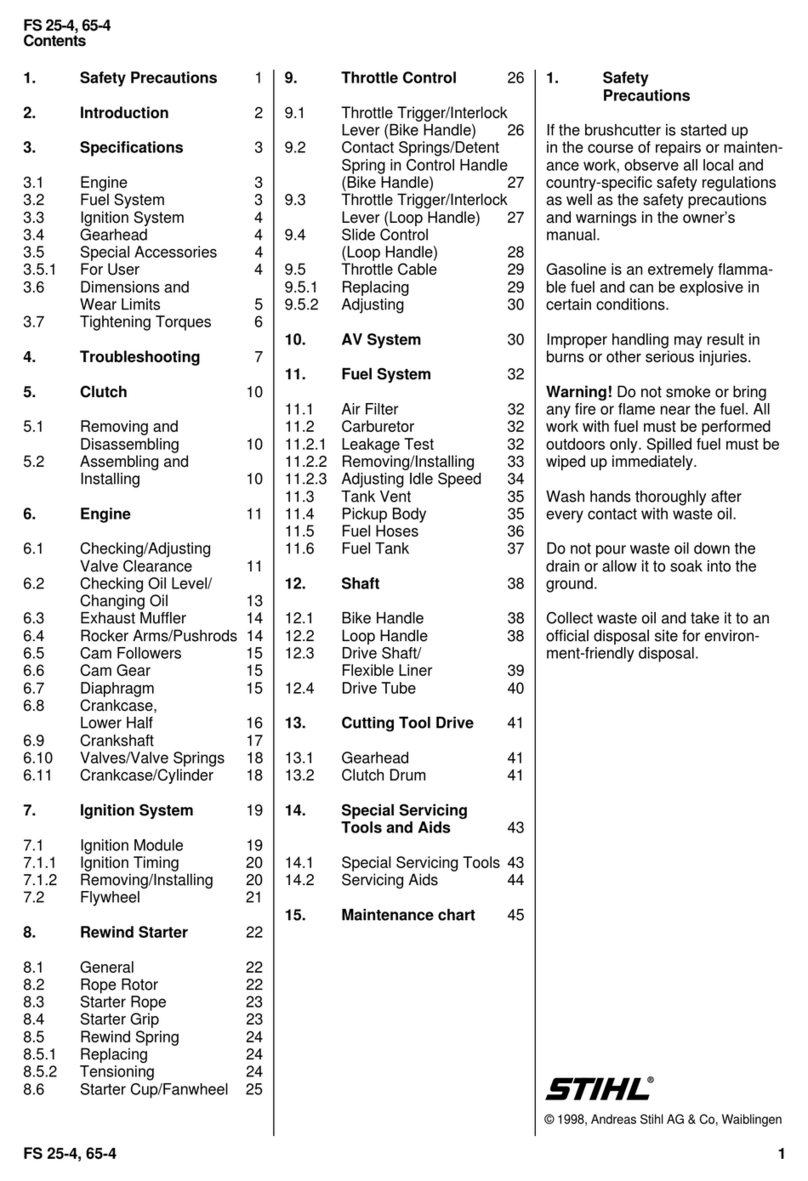
To reduce the risk of serious or fatal injury from
breathing toxic fumes, ensure proper ventilation
when working in trenches, hollows or other con‐
fined locations.
Stop work immediately if you start suffering from
nausea, headaches, impaired vision (e.g. your
field of vision gets smaller), impaired hearing,
dizziness, or impaired concentration – these
symptoms may possibly be the result of too-high
exhaust gas concentration – Risk of accidents!
Operate your power tool so that it produces a
minimum of noise and emissions – do not run the
engine unnecessarily, accelerate the engine only
when working.
To reduce the risk of fire, do not smoke while
operating or standing near your power tool. Com‐
bustible fuel vapor may escape from the fuel sys‐
tem.
Dusts, mist and fumes emissions during the work
may be hazardous to your health. Wear respira‐
tory protection in case of heavy dust or smoke
emission.
The gear head becomes hot during
operation. To reduce the risk of burn
injury, do not touch the gear housing!
If your power tool is subjected to unusually high
loads for which it was not designed (e.g. heavy
impact or a fall), always check that it is in good
condition before continuing work – see also
"Before Starting". Check in particular that the fuel
system has no leaks and the safety equipment is
fully operative. Never use a power tool that is no
longer safe to operate. In case of doubt, contact
a dealer.
Do not operate your power tool in the starting
throttle position – engine speed cannot be con‐
trolled in this position.
Inspect the hedge and work area to avoid dam‐
aging the cutting blades:
–Remove stones, rocks, pieces of metal and
other solid objects
–When working close to the ground, make sure
that no sand, grit or stones get between the
cutting blades
–Take particular care when cutting hedges next
to or against wire fences
Do not touch electric power lines – never cut
through electric power lines – risk of electrocu‐
tion!
Do not touch the cutting blades.while
the engine is running. If the cutting
blades become jammed by an object,
switch off the engine immediately
before attempting to remove the
object – risk of injury!
Opening the throttle when the cutting blades are
jammed increases the load and reduces the
working speed of the engine. The constant slip‐
ping of the clutch causes overheating and dam‐
age to important components (e.g. coupling,
plastic housing parts) – thus e.g. due to the cut‐
ting blade moving during idling – risk of injury!
If the hedge is very dusty or dirty, spray the cut‐
ting blades with STIHL resin solvent from time to
time during cutting. This helps reduce blade fric‐
tion as well as the aggressive effects of sap and
the build-up of dirt particles.
Before you leave the machine: Shut the engine
off.
Check the cutting blades at regular, frequent
intervals during operation or immediately if there
is a noticeable change in cutting behavior:
–Shut off the engine
–Wait for cutting blades to come to a standstill
–Check condition and tightness of connections,
look out for fine cracks
–Ensure that the cutting blades are sharp
Always clean plant residue, chips, leaves and
excess lubricant off the engine and muffler – risk
of fire!
2.8 After finishing work
Always clean dust and dirt off the machine – do
not use any grease solvents for this purpose.
Spray the cutting blades with STIHL resin sol‐
vent. Run the motor briefly so that the solvent is
evenly distributed.
2.9 Vibrations
Prolonged use of the power tool may result in
vibration-induced circulation problems in the
hands (whitefinger disease).
No general recommendation can be given for the
length of usage because it depends on several
factors.
The period of usage is prolonged by:
–Hand protection (wearing warm gloves)
–Work breaks
The period of usage is shortened by:
English 2 Safety Precautions and Working Techniques
6 0458-519-8321-D












